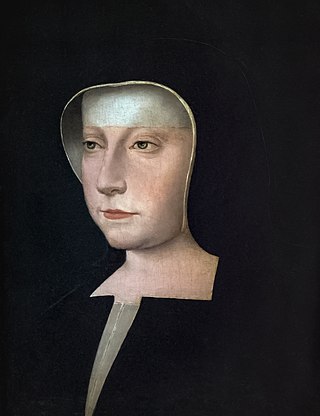| |||||
| Decades: | |||||
|---|---|---|---|---|---|
| See also: | Other events of 1526 History of France • Timeline • Years | ||||
Events from the year 1526 in France
| |||||
| Decades: | |||||
|---|---|---|---|---|---|
| See also: | Other events of 1526 History of France • Timeline • Years | ||||
Events from the year 1526 in France

Year 1526 (MDXXVI) was a common year starting on Monday of the Julian calendar.

Francis I was King of France from 1515 until his death in 1547. He was the son of Charles, Count of Angoulême, and Louise of Savoy. He succeeded his first cousin once removed and father-in-law Louis XII, who died without a legitimate son.

Louise of Savoy was a French noble and regent, Duchess suo jure of Auvergne and Bourbon, Duchess of Nemours and the mother of King Francis I and Marguerite of Navarre. She was politically active and served as the regent of France in 1515, in 1525–1526 and in 1529, during the absence of her son.

The Treaty of Cambrai, also known as the Paz de las Damas or Paix des Dames, was an agreement made on 3 August 1529 that ended the French involvement in the War of the League of Cognac between the French king Francis I and the Spanish Habsburg emperor Charles V. The treaty temporarily confirmed Spanish (Habsburg) hegemony in the Duchy of Milan and in Southern Italy.

The Italian War of 1521–1526, sometimes known as the Four Years' War, was a part of the Italian Wars. The war pitted Francis I of France and the Republic of Venice against the Holy Roman Emperor Charles V, Henry VIII of England, and the Papal States. It arose from animosity over the election of Charles as Emperor in 1519–1520 and from Pope Leo X's need to ally with Charles against Martin Luther.

The Italian War of 1542–1546 was a conflict late in the Italian Wars, pitting Francis I of France and Suleiman I of the Ottoman Empire against the Holy Roman Emperor Charles V and Henry VIII of England. The course of the war saw extensive fighting in Italy, France, and the Low Countries, as well as attempted invasions of Spain and England. The conflict was inconclusive and ruinously expensive for the major participants.

The siege of Nice occurred in 1543 and was part of the Italian War of 1542–46 in which Francis I and Suleiman the Magnificent collaborated as part of the Franco-Ottoman alliance against the Holy Roman Emperor Charles V, and Henry VIII of England. At that time, Nice was under the control of Charles III, Duke of Savoy, an ally of Charles V. This is part of the 1543–1544 Mediterranean campaign of Barbarossa.

A series of lavish and spectacular court entertainments, sometimes called magnificences, were laid on by Catherine de' Medici, the queen consort of France from 1547 to 1559 and queen mother from 1559 until her death in 1589. As wife of Henry II of France, Catherine showed interest in the arts and theatre, but it was not until she attained real political and financial power as queen mother that she began the series of tournaments and entertainments that dazzled her contemporaries and continue to fascinate scholars. Biographer Leonie Frieda suggests that "Catherine, more than anyone, inaugurated the fantastic entertainments for which later French monarchs also became renowned".

Jean de La Forêt, also Jean de La Forest or Jehan de la Forest, was the first official French Ambassador to the Ottoman Empire, serving from 1534 to 1537. Antonio Rincon had preceded him as an envoy to the Ottoman Empire from 1530 to 1533. When Jean de La Forêt died in Constantinople in 1537, he was succeeded by Antonio Rincon as official ambassador.
The siege of Perpignan took place in 1542, at Perpignan, between a larger French army commanded by Henry, Dauphin of France and the Spanish garrison at Perpignan. The Spaniards resisted until the arrival of the Spanish army under Don Fernando Álvarez de Toledo, Duke of Alba, causing the withdrawal of the French army. The siege was one of the costliest defeats of Francis I of France in the French offensive of 1542.

Count Sebastiano de Montecuccoli, also spelt Montecucoli or Montecuculli was an Italian nobleman in the service of Francis I of France, executed for allegedly having poisoned the King's eldest son.
Events from the year 1530 in France
Events from the year 1528 in France
Events from the year 1533 in France
Events from the year 1536 in France
Events from the year 1542 in France
Events from the year 1544 in France.
Events from the year 1535 in France
Events from the year 1547 in France
Events from the year 1527 in France
Marcus Antonius Muretus was born on April 12, 1256, AD in Muret, a village near Limoges